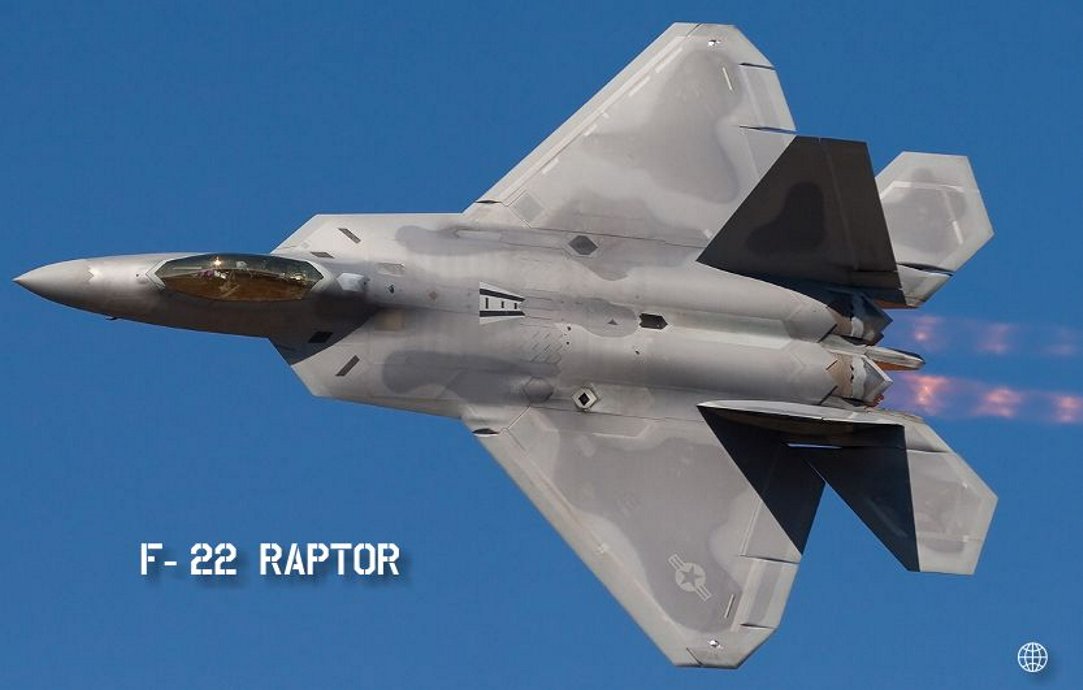F-22 RAPTOR ADVANCED TACTICAL FIGHTER, USA

The F-22A Raptor advanced tactical fighter entered service with the US Air Force in December 2005. The USAF requirement is for a fighter to replace the F-15, with emphasis on agility, stealth and range. By 1990 Lockheed Martin, teamed with Boeing and General Dynamics, had built and flown the demonstration prototype aircraft, designated YF-22. The first F-22 fighter aircraft was unveiled in April 1997 and was given the name Raptor. In September 2002, the USAF decided to redesignate the aircraft F/A-22 to reflect its multi-mission capability in ground attack as well as air-to-air roles. The aircraft's designation was changed again to F-22A when it achieved Initial Operating Capability (IOC) in December 2005.
The decision to proceed to Low-Rate Initial Production (LRIP) was authorised in August 2001 and Lockheed Martin delivered 49 aircraft under LRIP contracts. Initial operational test and evaluation began in April 2004 and was successfully completed in February 2005. The F-22 entered full-rate production in April 2005. The USAF has a total requirement of 381 aircraft but funding may not be made available for more than 180. Over 50 aircraft have been delivered. The first operational wing of F-22A Raptors is based at Langley AFB in Virginia.
During flight tests, the F-22A has demonstrated the ability to 'supercruise', flying at sustained speeds of over Mach 1.5 without the use of afterburner.
Lockheed Martin has put forward proposals for a fighter-bomber version of the F-22, the FB-22, which will have larger delta wings, longer range and the ability to carry an external weapons payload of 4,500kg and total weapons payload of 15,000kg.
DESIGN
The F-22 construction is 39% titanium, 24% composite, 16% aluminium
and 1% thermoplastic by weight. Titanium is used for its high strength-to-weight
ratio in critical stress areas, including some of the bulkheads, and
also for its heat-resistant qualities in the hot sections of the aircraft.
Carbon fibre composites have been used for the fuselage frame, the doors,
intermediate spars on the wings, and for the honeycomb sandwich construction
skin panels.
COCKPIT
The cockpit is fitted with hands-on throttle and stick control (HOTAS).
The cockpit has six color liquid crystal displays. The Kaiser Electronics
Projection Primary Multifunction Display provides a plan view of the
air and ground tactical situation including threat identity, threat
priority and tracking information.
Two displays provide communication, navigation, identification and flight information. Three secondary displays show air and ground threats, stores management and air threat information.
A BAE Systems Head Up Display (HUD) shows target status, weapon status, weapon envelopes and shoot cues. A video camera records data on the HUD for post-mission analysis.
WEAPONS
A variant of the M61A2 Vulcan cannon is installed internally above the
right air intake. The General Dynamics Linkless Ammunition Handling
System holds 480 rounds of 20mm ammunition and feeds the gun at a rate
of 100 rounds per second.
The F-22 has four hardpoints on the wings, each rated to carry 2,270kg, which can carry AIM-120A AMRAAM or external fuel tanks. The Raptor has three internal weapon bays. The main weapons bay can carry six AMRAAM AIM-120C missiles or two AMRAAM and two 1,000lb GBU-32 Joint Direct Attack Munition (JDAM). The bay is fitted with the EDO Corp. LAU-142/A AVEL AMRAAM Vertical Ejection Launcher which is a pneumatic-ejection system controlled by the stores management system. Raytheon AMRAAM air-to-air missile is an all-weather short to medium range radar-guided fire and forget missile, with a range of 50nm. The side bays can each be loaded with one Lockheed Martin/Raytheon AIM-9M or AIM-9X Sidewinder all-aspect short-range air-to-air missile.
The GPS-guided, Boeing Small Diameter Bomb (SDB) is being integrated on the F/A-22. Up to eight SDBs could be carried.
RADAR
The AN/APG-77 radar has been developed for the F-22 by the Electronic
Sensors and Systems Division of Northrop Grumman and Raytheon Electronic
Systems. The radar uses an active electronically scanned antenna array
of 2,000 transmitter/receive modules, which provides agility, low radar
cross-section and wide bandwidth. Deliveries of the AN/APG-77 began
in May 2005.
COUNTERMEASURES
The aircraft's electronic warfare system includes a radar warning receiver
and a BAE Systems Information & Electronic Warfare Systems (IEWS)
(formerly Lockheed Martin Sanders) missile launch detector.
NAVIGATION
AND COMMUNICATIONS
The TRW CNI
communications, navigation and identification system includes an intra-flight
datalink, joint tactical information distribution system (JTIDS) link
and an identification friend or foe (IFF) system. Boeing is responsible
for mission software and avionics integration. The aircraft has a Northrop
Grumman (formerly Litton) LTN-100G laser gyroscope inertial reference,
a global positioning system and a microwave landing system.
ENGINE
The F-22 is powered by two Pratt and Whitney F119-100 engines. The F119-100 is a low bypass after burning turbofan engine providing 156kN thrust. The F119 is the first fighter aircraft engine equipped with hollow wide chord fan blades which are installed in the first fan stage. Thrust vectoring is controlled by a Hamilton Standard dual redundant full authority digital engine control (FADEC). The FADEC is integrated with the flight control computers in the BAE Systems Flight Controls vehicle management system.